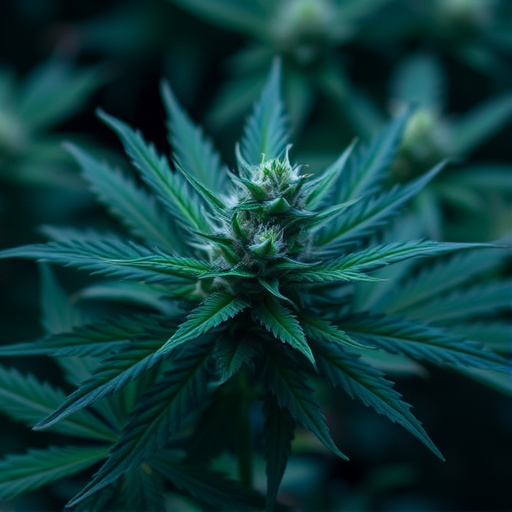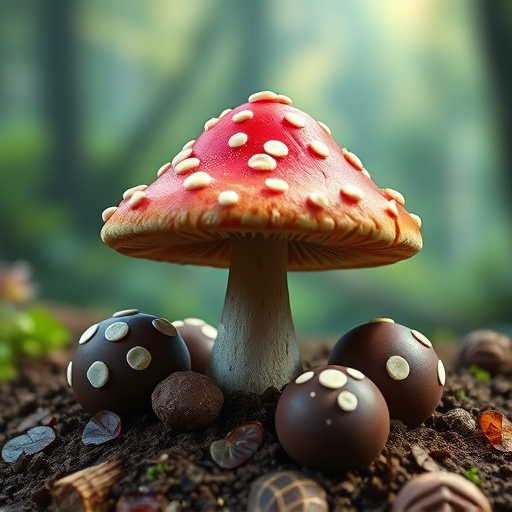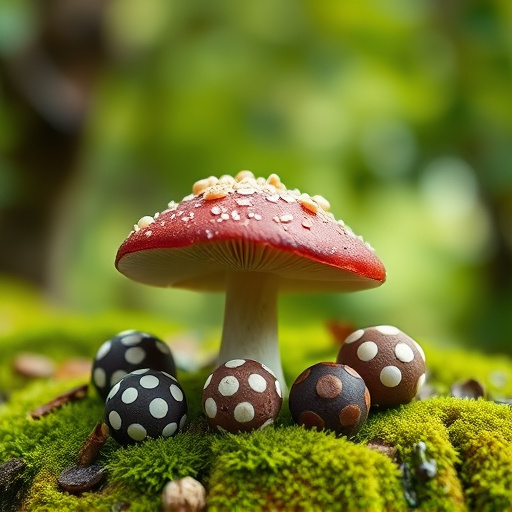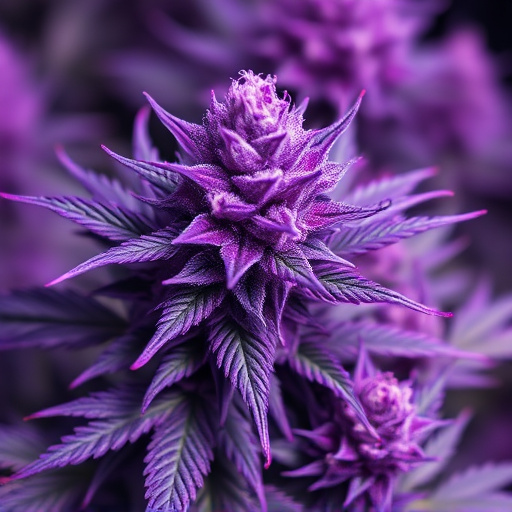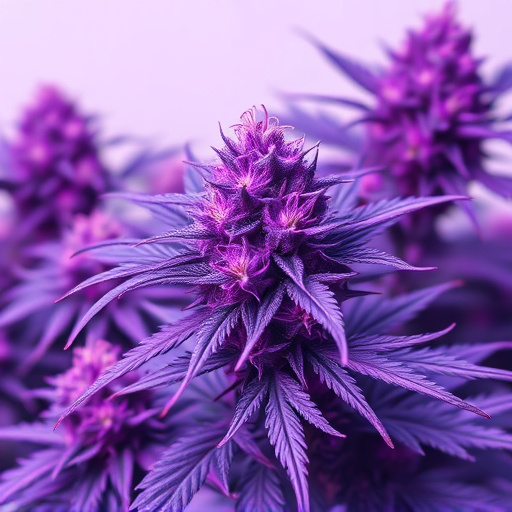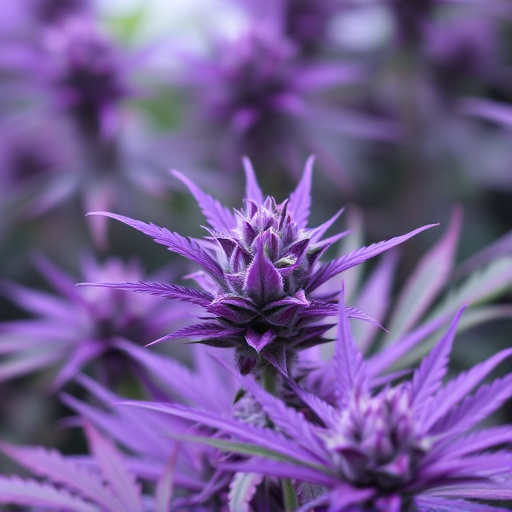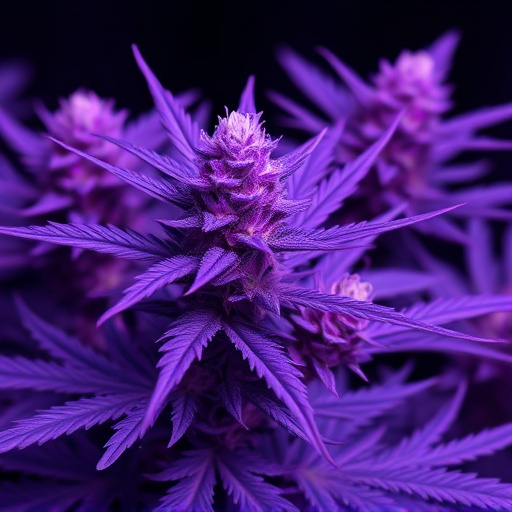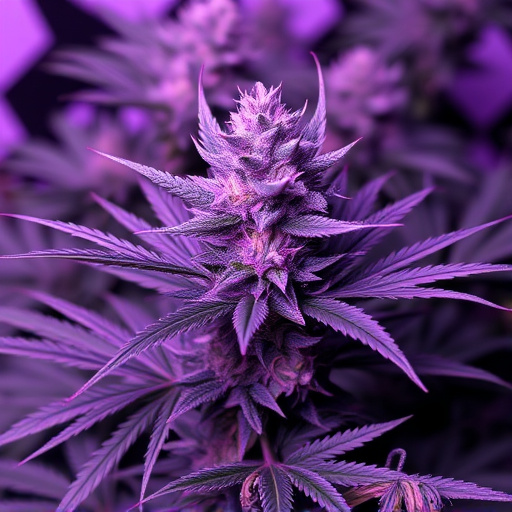The distinctive colors of cannabis flowers, especially the sought-after purple strains, stem from a complex interplay of cannabinoids (like THC and CBD), terpenes, and environmental factors. Purple hues are driven by anthocyanin pigments, which can be influenced by climate and soil conditions, resulting in unique terpene profiles offering potential therapeutic benefits. Cultivators harness these interactions to create desired color profiles, with purple strains gaining popularity for their visual appeal and perceived therapeutic properties.
Cannabis flowers’ vibrant color changes have fascinated cultivators and enthusiasts for decades. This article delves into the science behind these transformations, focusing on the chemical composition that creates distinctive pigments. We explore the role of genetic traits, specifically purple strains, and their impact on terpene production. Additionally, environmental factors such as climate and soil are analyzed for their influence on the final color, offering insights into the intricate process that makes cannabis so captivating.
- The Science Behind Cannabis Pigmentation: Unraveling the Chemical Composition
- Purple Strains: A Genetic Trait and Its Impact on Terpene Production
- Environmental Factors: How Climate and Soil Influence Final Color
The Science Behind Cannabis Pigmentation: Unraveling the Chemical Composition
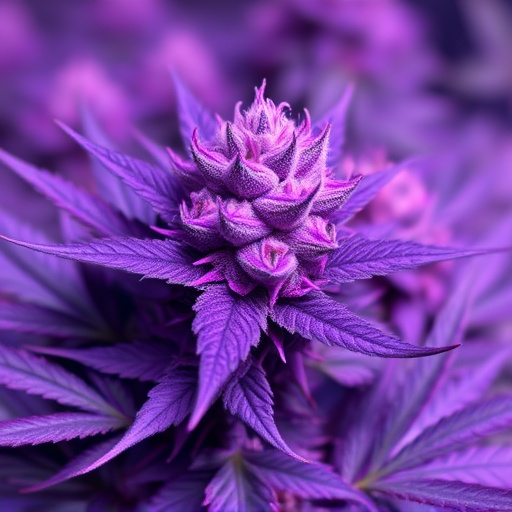
The science behind cannabis pigmentation is a fascinating journey into the plant’s chemical composition. Cannabis flowers, known for their diverse colors, from vibrant green to rich browns and the elusive purple strains of cannabis, owe their hues to a complex interplay of chemicals. Within the plant, various compounds, including cannabinoids and terpenes, contribute to its unique visual identity. Cannabinoids like THC and CBD, responsible for the plant’s psychoactive properties, play a role in pigment production, influencing the final color.
Terpenes, aromatic compounds that give cannabis its distinct scents, also contribute significantly. Certain terpenes have been linked to specific pigment expressions, with some encouraging the development of richer, darker colors. The intricate dance between these chemical components results in the breathtaking array of colors seen in cannabis flowers, from subtle hints of purple in strains renowned for their tonal beauty to the deeper shades that captivate both cultivators and enthusiasts alike.
Purple Strains: A Genetic Trait and Its Impact on Terpene Production
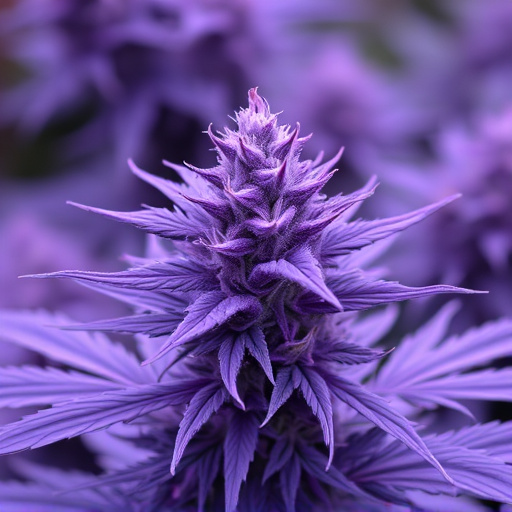
The vibrant purple hues in cannabis flowers are more than just visually striking; they’re a testament to a complex genetic trait that influences not only the plant’s appearance but also its chemical composition. Purple strains, characterized by their rich anthocyanin pigments, have become increasingly popular among cannabis enthusiasts due to their unique aesthetics and potential therapeutic benefits. This genetic variation is particularly intriguing as it can significantly alter the production of terpenes, the aromatic compounds responsible for cannabis’ distinct flavors and aromas.
The connection lies in the plant’s defense mechanism. Anthocyanins, which give purple strains their color, are produced in response to environmental stressors like cold temperatures. These pigments act as natural antioxidants, protecting the plant from damage caused by free radicals. In turn, this stress response can trigger changes in terpene profiles, leading to cannabis with unique flavor and scent characteristics. Some popular terpenes associated with purple strains include linalool and myrcene, known for their calming and relaxing effects, making these varieties appealing for evening use or managing anxiety.
Environmental Factors: How Climate and Soil Influence Final Color
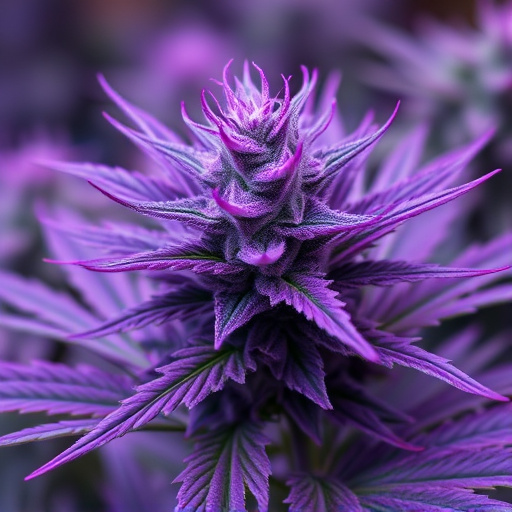
The final color of cannabis flowers is a result of complex interactions between various factors, with environmental conditions playing a significant role in this transformation. Climate and soil quality are two key elements that can dramatically influence the vibrant hues displayed by these plants. For instance, colder climates often lead to later flowering times and can encourage the development of more intense colors, particularly purple strains of cannabis. This is because cooler temperatures slow down the plant’s growth, allowing more time for the accumulation of anthocyanins, pigments responsible for the red, blue, and purple hues.
Soil composition also contributes to the color variation. Plants grown in well-drained soil with a balance of nutrients tend to produce flowers with deeper colors. Specific mineral content can affect pigment production; for example, higher levels of nitrogen might result in less vivid purples, while a deficiency in certain micronutrients can enhance anthocyanin synthesis, leading to more vibrant shades of purple in cannabis strains. Understanding these environmental factors is crucial for cultivators aiming to create specific color profiles and cater to the preferences of consumers who appreciate the aesthetic appeal of unique purple strains of cannabis.
The captivating color transformation of cannabis flowers is a result of intricate interactions between genetics, chemistry, and environment. From the vibrant purple hues associated with specific strains to the diverse shades influenced by external factors, each color variant offers a unique sensory experience. Understanding these nuances, as explored in our discussion on scientific composition, genetic traits, and environmental impacts, not only enriches our appreciation for cannabis but also guides cultivators in crafting distinct floral profiles tailored to various preferences.



